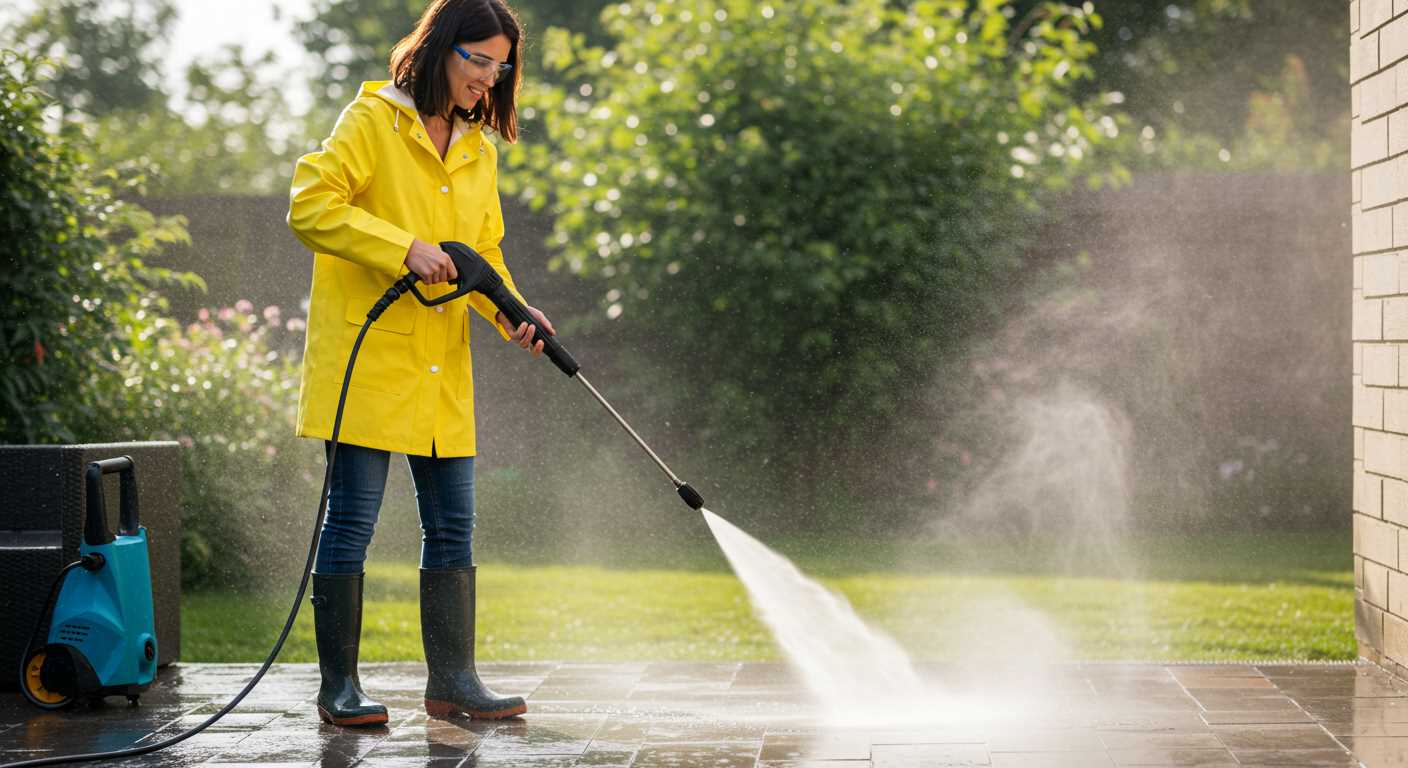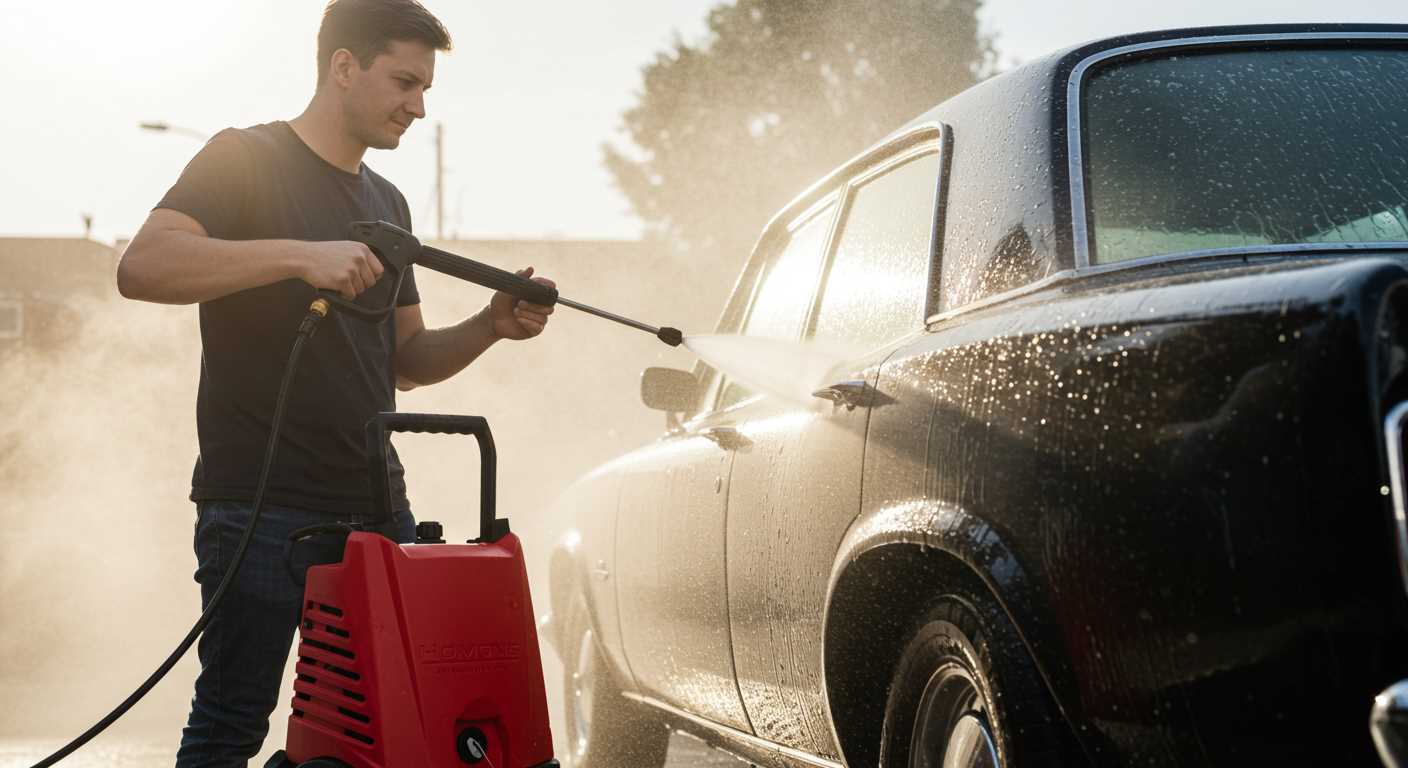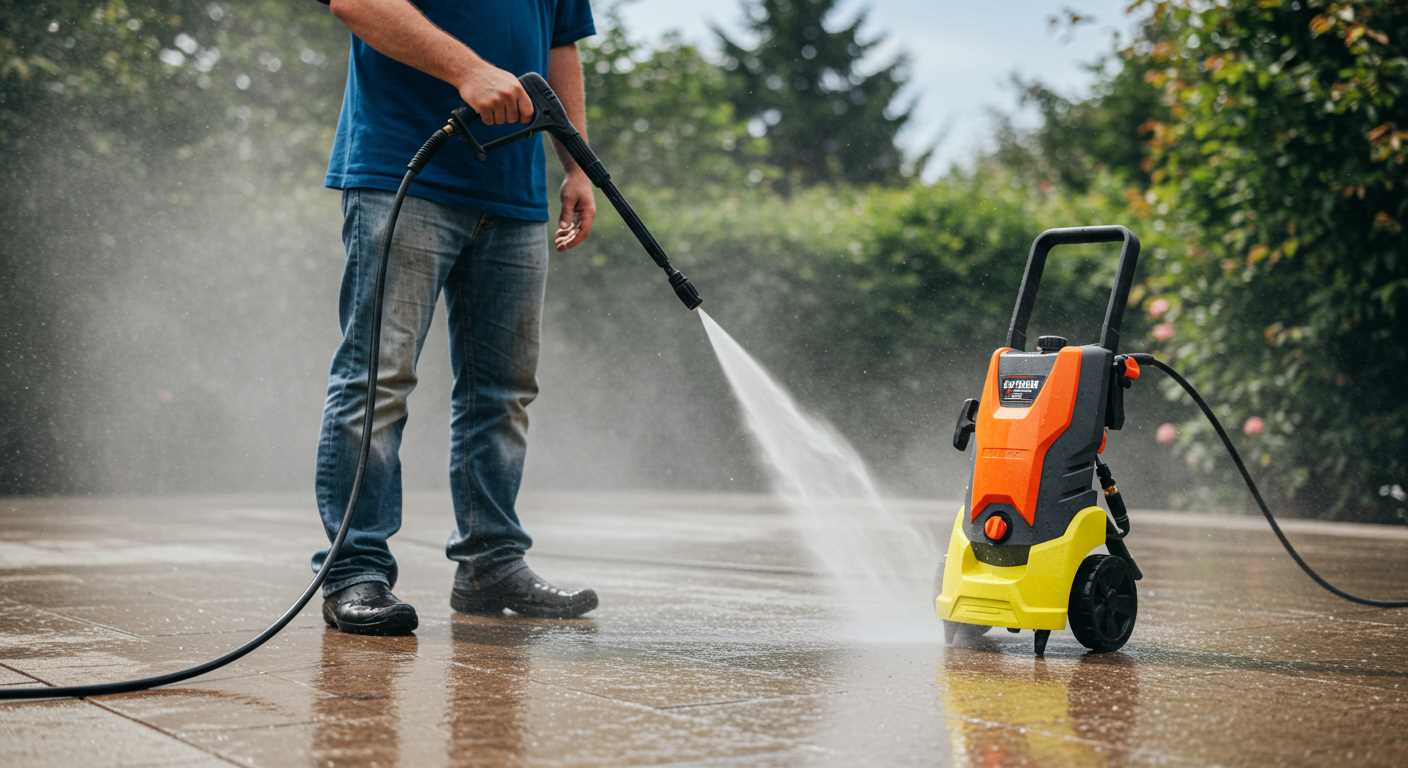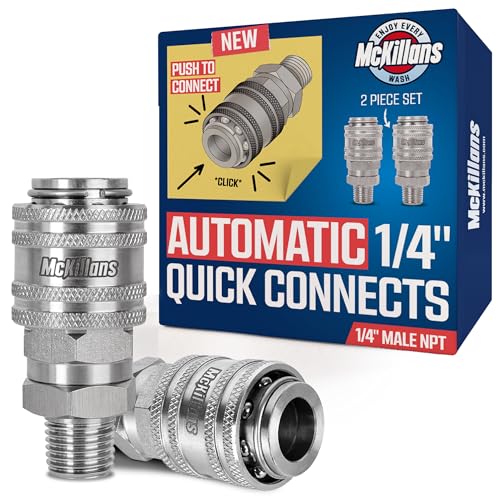Not all nozzles designed for high-powered cleaning devices are interchangeable. You might find that a nozzle from one model doesn’t fit another, even if they seem similar at first glance. This is primarily due to variations in size, threading, and design specifications across different manufacturers.
For those looking to optimise their cleaning performance, I recommend always consulting the user manual of your machine. It will provide specifications on compatible nozzles and attachments. Brands often have distinct fittings; thus, purchasing nozzles from the same manufacturer can ensure they perform effectively.
While generic nozzles may be available, they often come with trade-offs. They might not deliver the same level of performance or durability. Some users find that investing in original components pays off in the long run, yielding better results and prolonging the lifespan of their equipment.
In summary, compatibility is not guaranteed across different brands and models of cleaning tools. Prioritising the right fit can significantly enhance your cleaning experience and efficiency. Always verify compatibility before making a purchase to avoid inconvenience and ensure peak performance.
Understanding Different Types of Pressure Washer Nozzles
The selection of nozzles significantly impacts cleaning performance. I recommend familiarising yourself with common varieties: 0°, 15°, 25°, and 40° models, each designed for specific tasks.
The 0° nozzle, marked by a red tip, delivers a focused jet of water ideal for removing stubborn dirt and grime from hard surfaces. Its intense spray is excellent for concrete and tough stains but may cause damage to softer materials.
The 15° nozzle, coloured yellow, offers a narrow spray that effectively blasts away grime while remaining somewhat less aggressive than its 0° counterpart. It’s perfect for heavy-duty tasks like stripping paint or cleaning heavily soiled areas.
For general cleaning, the 25° nozzle, typically green, provides a wider spray pattern, making it suitable for a variety of surfaces including driveways and decks. This option balances performance and gentleness, making it an excellent choice for most cleaning scenarios.
If you need to clean delicate materials, the 40° nozzle, which is blue, offers the gentlest spray. It disperses water over a larger area, making it ideal for washing vehicles or wooden surfaces without risk of damage.
Specialty nozzles are also available, such as turbo or rotary nozzles, which combine the power of a narrow stream with the coverage of a wider pattern, enhancing efficiency and effectiveness during cleaning.
Understanding these varieties allows for better selection based on the task at hand, ensuring that you achieve optimal results while minimising potential damage to surfaces.
Identifying Compatibility Between Pressure Washer Brands

For effective functionality, always check brand compatibility before purchasing accessories. Most manufacturers design their nozzles and fittings specifically for their equipment, which may lead to incompatible connections. If you own a Kärcher model, for instance, its nozzles typically won’t fit a Ryobi washer without an adapter.
Gauge Compatibility by Connection Size
.jpg)
Common sizes for connectors range from 1/4 inch to 3/8 inch. Measure your current connections to ensure any new attachments match these dimensions. Additionally, verify any locking mechanisms–some brands employ unique setups that might not be interchangeable with others. If you experience difficulty connecting your equipment, refer to the manufacturer’s guidelines for specifications.
Consult the Manufacturer’s Resources
.jpg)
Exploit the wealth of information available on the manufacturer’s website. Most offer compatibility charts or detailed product descriptions enabling you to cross-reference various parts. Joining user forums can also provide insights from others who have successfully swapped components. Lastly, customer service representatives are often knowledgeable about their products and can clarify any doubts regarding interchangeability.
How Nozzle Size Affects Water Pressure and Spray Pattern
The choice of nozzle size directly impacts both water pressure and the resulting spray pattern, which ultimately affects cleaning efficiency. Smaller nozzles concentrate water flow, significantly increasing pressure at the nozzle tip but creating a narrower spray pattern. This results in intense cleaning power, ideal for tough stains on hard surfaces.
Pressure Dynamics
As the nozzle size decreases, the speed of the water exiting the nozzle increases. The relationship can be quantified; for example, a 0.25-inch nozzle can produce pressures up to 3000 PSI, whereas a 0.75-inch nozzle may reduce that to around 1000 PSI, depending on the machine’s specifications. Thus, selecting the appropriate nozzle is crucial for specific cleaning tasks.
Spray Patterns

- 15-degree nozzles: Produce a narrow, pencil-thin stream, perfect for removing tough grime from concrete or brick.
- 25-degree nozzles: Offer a wider fan, suitable for cleaning decks and siding without risking damage.
- 40-degree nozzles: Provide a gentle spray, often used for washing vehicles and delicate surfaces.
Understanding the desired outcome is important. High pressure from a smaller nozzle can strip paint or damage soft materials, while wider nozzles may not tackle heavily soiled areas effectively. Balancing nozzle selection with the task at hand maximises both effectiveness and safety.
It’s advisable to have a variety of nozzles on hand, allowing for quick changes based on specific cleaning requirements. Regular experimentation with different sizes can lead to improved results and efficiency.
Consequences of Using Non-Compatible Nozzles
Using mismatched nozzles can lead to severe damage to your equipment. Most notably, I’ve encountered instances where improperly fitting accessories resulted in leaks that not only wasted water but also caused significant wear and tear on internal components.
Reduced Performance
The effectiveness of cleaning diminishes substantially. Incompatible attachments can obstruct flow, leading to inadequate water pressure and uneven spray patterns. This results in additional time spent attempting to achieve the desired cleanliness, defeating the purpose of having reliable cleaning machinery.
Increased Risk of Personal Injury
Improperly fitted accessories can become dislodged during operation, creating a hazardous situation. High-velocity water jets pose serious risks to users and bystanders if nozzles are not securely attached to the wand.
Lastly, consistent misuse of unfitting attachments decreases the longevity of your device. Investing in the correct nozzles compatible with your specific model ensures optimal functionality and safety, allowing you to maximise your cleaning efforts without the fear of damaging your equipment or causing injury.
Where to find replacement tips for specific pressure washers
Start with the manufacturer’s official website. Most brands offer a dedicated section for accessories, where you can find compatible nozzles tailored for specific models. This ensures that you get the right fit.
Specialty retail stores dedicated to cleaning equipment often stock a variety of nozzles. Staff there can guide you in selecting the right product for your machine. Additionally, these retailers might carry universal nozzles that are compatible across multiple brands.
Online platforms like Amazon or eBay provide extensive selections, often including user reviews that can help inform your choice. Look for sellers who specify compatibility with your machine model.
Local hardware stores sometimes have replacement parts available, though stock can vary. It’s wise to call ahead to check if they have the specific nozzle you’re looking for.
This community of users is a valuable resource; forums and social media groups often discuss where to find specific parts. Engaging with these platforms can lead you to sellers who might not have come up in a standard search.
Keep an eye out for local repair shops that handle cleaning equipment. They might have a selection of parts on hand or be able to order what you need.
Adjusting Spray Patterns for Various Cleaning Tasks

For optimal results, select the appropriate spray pattern based on the cleaning task. A wide, fan spray is ideal for delicate surfaces like cars or windows, while a concentrated jet is suited for tough grime on driveways or patios.
| Task | Recommended Spray Pattern | Details |
|---|---|---|
| Cleaning Cars | 25-Degree Fan | Gentle coverage suitable for painted surfaces to avoid scratches. |
| Washing Windows | 40-Degree Fan | Safe for glass, providing a thorough rinse without damage. |
| Removing Grime from Brick | 15-Degree Jet | Targets tough stains effectively without excessive pressure. |
| Cleaning Decks | 25-Degree Fan | Balances power and coverage, protecting wood from splintering. |
| Preparing Surfaces for Painting | 0-Degree Jet | High-pressure to strip old paint or contaminants, not for use on soft materials. |
Adjustments can also be made based on the distance from the surface. Keeping a consistent distance enhances cleaning efficiency while minimising the risk of damage.
Regular maintenance of the nozzle ensures optimal performance. Clogs can alter the spray pattern, leading to inefficient cleaning. Always check for debris or mineral build-up before commencing tasks.
The right pattern and technique ensure effective and safe cleaning, allowing you to achieve superior results with each use.
Maintaining Nozzles for Longevity
Regular maintenance significantly extends the lifespan of cleaning tool nozzles. The following practices ensure optimal performance and durability:
- Clean After Each Use: After each cleaning session, rinse nozzles thoroughly with clean water to remove dirt and debris. This prevents clogs that can damage the internal components.
- Inspect for Damage: Routinely check each nozzle for cracks or wear. Minor damages can escalate into larger issues if neglected.
- Dry Properly: After cleaning, ensure nozzles are dried completely to prevent rust and corrosion. Store them in a dry environment away from extreme temperatures.
Implementing a storage routine also enhances nozzle integrity:
- Use Protective Caps: Always replace protective caps on nozzles when not in use. This prevents dust accumulation and accidental damage.
- Avoid Dropping: Handle each nozzle with care. Dropping them can alter alignment or create cracks that are not immediately visible.
For specific materials:
- Plastic Nozzles: These are susceptible to cracking, especially when exposed to sunlight for prolonged periods. Consider UV-resistant storage solutions.
- Metal Nozzles: Regularly apply a light coat of oil to prevent rust. Check seals and O-rings for wear, replacing as necessary.
By following these steps, I have seen nozzles last significantly longer, ensuring consistent cleaning performance without frequent replacements. Make these practices routine for improved outcomes.
Tips for Safely Changing and Using Nozzles
Always disconnect the equipment from the power source before changing nozzles. This prevents accidental activation, which could lead to injuries.
Hold the nozzle firmly but gently when removing or attaching it. Use a towel for better grip and to mitigate the risk of dropping it or injuring yourself.
Inspecting Nozzle Condition
Before every use, inspect your nozzle for damage or blockages. Cracks, wear, or debris can significantly impact performance and safety.
Safe Usage Practices
Always direct the nozzle away from people, pets, and fragile objects when starting the unit. Maintain a safe distance to prevent injury and ensure effective cleaning.
Utilise the appropriate nozzle for the task. Using a high-pressure nozzle on delicate surfaces can cause irreversible damage.
| Task | Recommended Nozzle | Notes |
|---|---|---|
| Cleaning patios | 25-degree | Good for surfaces like concrete without damage |
| Washing vehicles | 40-degree | Safe for paintwork and glass |
| Removing mildew | 0-degree | Use with caution; maintain distance to avoid harm |
Always wear appropriate safety gear, including goggles and gloves. This ensures protection from potential debris and high-pressure water.








